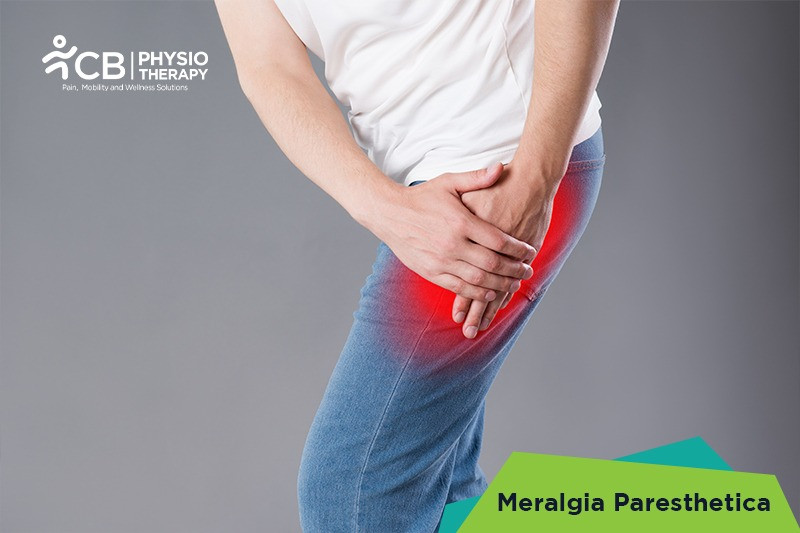
Meralgia Paresthetica is a condition that occurs due to the compression of the lateral femoral cutaneous nerve (LFCN). This nerve supplies sensation to the front and side of the thigh. Meralgia Paresthetica causes burning pain and numbness in the thigh area.
Cryotherapy is found to be effective to decrease swelling and pain.
Thermotherapy increases blood circulation and relieves pain and inflammation.
Phonophoresis:
Phonophoresis helps the body to absorb pain medications that are applied.
Transcutaneous electrical stimulations (TENS):
Transcutaneous electrical nerve stimulation (TENS) is an effective treatment for painful peripheral neuropathy. It provides symptom relief by using an electric current to stimulate the nerve and activates central mechanisms and causes an analgesic effect.
Low-level laser therapy (LLLT)
Low laser therapy is found to be effective for LCN, as it has an analgesic effect for neuropathic pain.
Kinesio-Taping increases vascular and lymphatic flow, decreases pain, enhances normal muscle function, proprioception, and also helps to correct any malalignments.
Acupuncture techniques like needling and cupping can be done as it has shown effective results.
Manual therapy like myofascial therapy for iliopsoas, rectus femoris, Active Release Techniques (ART), mobilization or manipulation for the pelvis, and transverse friction massage of the inguinal ligament is recommended.
Exercises:
30 – 40 minutes of exercises a day for 3 or 4 days a week is done to relieve chronic pain, these exercises include joint stability exercises, flexibility exercises, muscle strengthening, and endurance exercises.
Strengthening and Stretching Exercises:
Strengthening and Stretching Exercises for the hip, pelvis, and abdominal core exercises are recommended. Strengthening exercises like isometric exercises with resistance, use of weights, etc can be done. Nerve stretching exercises can be done to relieve pain and reduce the tightness in the nerves and also help relieve pain that is associated with tight nerves.
Balance Exercises:
Balance training exercises are given to enhance postural control and functional ability.
Weight loss therapy for obese patients:
Physiotherapists help to decrease weight, by designing a weight loss program and increasing patients' physical activities.
Aerobic exercises like stationary biking, brisk walking, swimming, and water aerobic exercises can be done.
The patient is advised to lose weight, not to wear tight clothes, and avoid wearing tool belts and girdles. The patients are advised to take timely treatment from the doctors, to prevent any damage in the nervous system in the infected part.
Select your City to find & connect with our experts regarding Physiotherapy for Meralgia Paresthetica